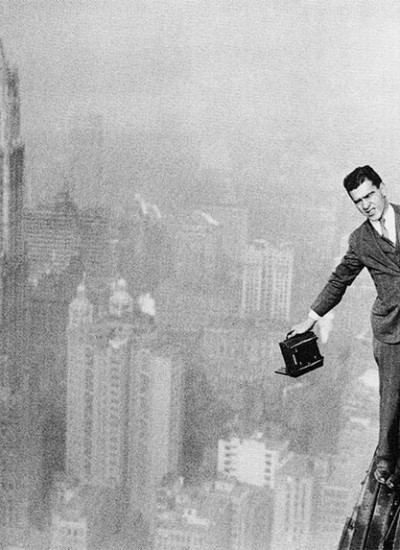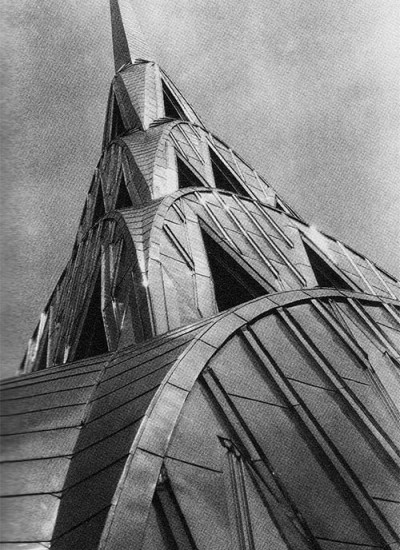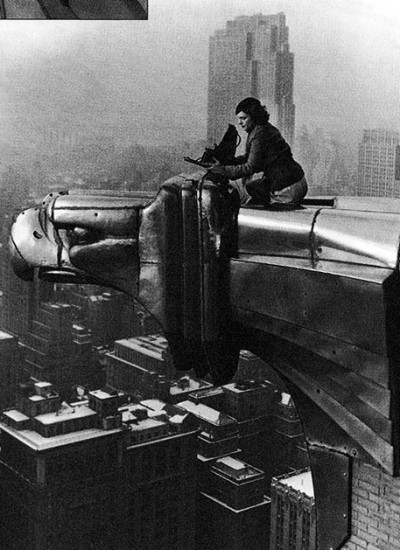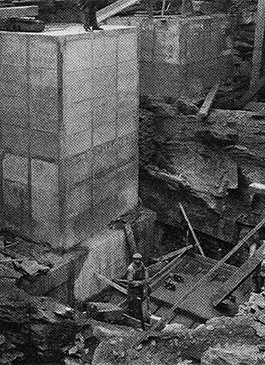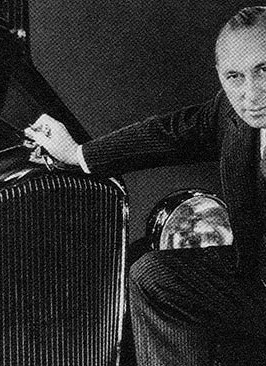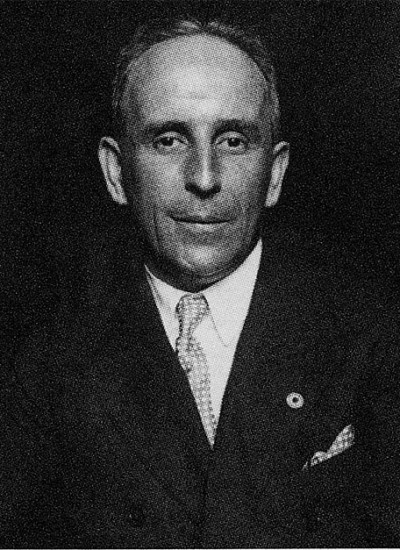In 1929, in the vibrant heart of Manhattan at the height of the Roaring Twenties, a fierce rivalry was born. Two architects, William Van Alen and Craig Severance, set out to imprint their individual marks on the greatest canvas in the world—the rapidly evolving skyline of New York City. Each man desired to build the city’s tallest building. Each would stop at nothing to outdo his rival.
In HIGHER, the battle between the architects is as suspenseful as the race itself—and as dramatic as the ingenious last-minute flourish that would briefly give one building the title of the tallest in the world, before another monument to American drive, desire, and one upmanship soared even higher.
Reviews
“Captivating. Bascomb describes the race as if he were a war correspondent, relating the marshaling of battalions of workers, secret battle strategy, deliberate lies, and plans redrawn at the last minute.” —Washington Post Book World
“A first-rate account of the race to construct the world’s tallest building…Lively and suspenseful.” —Boston Globe
“A riveting chronicle brimming with the verve of the Jazz Age.” —Newsday
“The fun in this book lies, as in the buildings, in the Art Deco details.” —The New Yorker
“Engrossing.”
—Dallas Morning News
“Bascomb brings to life everything from the largest personalities to the smallest details.”—Constant Reader
“Characters and buildings alike come vividly to life in Neal Bascomb’s account of the ambition, greed, and technical ingenuity during the Roaring Twenties. An enthralling tale, brilliantly told, of the greatest architectural adventure of the twentieth century.”
—Ross King, author of Brunelleschi’s Dome
“Page-turning.” —Rocky Mountain News
“Bascomb gives his tale a fresh sense of capitalist drama in his evocation of the nascent worlds of skyscraper engineering, architecture, and construction. Terrific detail.”
—Publishers Weekly
“Bascomb brings a keen eye for fascinating detail to this architectural history and uses an active, engaging writing style to pull the reader along at a rapid pace.” —Library Journal
Photos
Q & A
What inspired you to write about the skyscraper race?
My grandfather was a photographer for the St. Louis Post
Dispatch and shot the construction of the Gateway Arch.
He used to marvel me with stories of its construction and
how its shape was the same of a chain hanging down from
its two ends. From an early age, architects seemed like
gods to me, coming up with these ideas and figuring out
how to see them realized. You can imagine my reaction
then when I first stepped out of Grand Central Station in
New York, twenty-one years old, having come from the kind
of Midwestern town where people are more interested in
seeing the sky than scraping it. The Chrysler Building was
quite literally the first skyscraper I saw in the flesh—or in
steel and stone. I was won from the start.
Years later, I heard the story of hidden spires and a blood
feud between architects at a dinner party, but it seemed
so fantastic as to be urban myth. A little investigation proved
the story true, but what drove these men to such heights?
Could it be simply revenge played out in steel? That’s what I
wanted to know.
Was it simply revenge that they built higher and higher?
No, and that’s what makes this story so compelling. It was
ego, hubris, fame, revenge, economics, and the frenzy of
the stock market and the Roaring Twenties, all wrapped into
one. Two architects bent on revenge—no matter how
impassioned—could never have justified the expense. But if
you add the egos of the men who were financing these
skyscrapers, with the builders who wanted to make their
mark with the world’s tallest, with the economics of needing
to make the most money off a small plot of land, with a
time in America when anything and everything was possible
—and should be possible—then you have the ingredients for
a skyscraper race.
Was this craze for height limited to New York City?
Every major city in the country wanted their own tallest.
Imagine being a business executive or real-estate developer
in the Roaring Twenties. Money is easy to come by and
making a name for oneself of penultimate importance.
What better way than putting a signboard hundreds of
feet high, towering above every other structure for as far
as the eye can see. From coast to coast, the country
experienced an eruption of steel and stone that is
unparalleled.
Of course, the demand for height is not an American
invention. If you look to history’s great structures—the
pyramids, grand cathedrals, pagodas, ziggurats, castle
towers—height always played a role. Who they were
glorifying in these structures may have been different,
but building tall was always an expression of power
and predominance.
Are there parallels between this race and today?
Absolutely. Think of the Twenties for a moment. All-night
parties. Culture of extravagance. Limitless opportunity. A
boom in technology, advertising, industry, art. Money
flowing. Stock market soaring. Real-estate prices climbing
and climbing. Nobody thought that the great times would
ever end. Then think of the late 1990s. Sound familiar.
Lavish sums spent on skyscrapers and corporate
headquarters. Apartment buildings going up left and right.
And then the bubble burst. It’s amazing sometimes how
blind we are to what has gone before, but then again, we
wouldn’t have the Chrysler or Empire State Building
without a little unflagging optimism.
Why are skyscrapers important culturally?
Architecture is the story we tell ourselves about ourselves.
Skyscrapers are an American invention. They represent our
moxie, economic might, innovation, and industriousness.
Other civilizations erected monolithic structures to house
their Gods or defend their lands, we built big to house
American businesses. In other words, to make money.
Not to be cynical, but what could be more American than
that, no matter where you live.
What suprised you during the research?
First, I was shocked to learn the Chrysler Building was
universally panned by the critics at the time it was
completed. I mean they couldn’t write enough scathing
remarks about the spire and the steel-covered tower. And
the architect, William Van Alen, he never worked again.
Imagine, the designer of one of the most-loved buildings
in the world, and it was his one and only masterpiece.
Second, I was intrigued to learn the degree with which
the height race affected the buildings that now dominate
our skyline. Without the race, the Chrysler Building’s
tiered arch tower would be more stunted and missing
the needle that pierces the sky. The Empire State Building
would be flat on top. The cap on top, which was stated to
be a mooring mast for dirigibles, was actually built to make
sure that Walter Chrysler wouldn’t jack up his spire to
retake the height crown.
Third, and most significantly, I was surprised to learn from
what backgrounds came the builders, architects, and
owners who saw these skyscrapers rise. Across the board,
they were from meager upbringings. Each was testament
to the fact that with hard work, determination, and
intelligence, anything was possible. It’s incredible to think
that the skyline of America is defined by their stories.
How was the experience of writing this story?
History to me is best brought to the page through the eyes
of the people who lived it. The individuals who inhabited this
story were to a person both rich and complex, and so it
made the telling a wonderful experience. That said, it wasn’t
easy. Sadly, the skyscraper race of the 1920s, which to my
mind is one of the most quintessential of American stories,
was poorly documented at the time and few left much in
terms of the events that transpired.
My research was a lesson in detective work, and with each
passing month, I pieced together more and more of what
happened. It was an exciting jigsaw puzzle. Some details
I found in archives and old newspaper and magazine articles.
I tracked down the children and grandchildren of the key
players, which proved instrumental. And I also discovered
some records of William Van Alen, the least known but most
fascinating of characters in this story. He has truly been a
mystery in architectural history, and I hopefully have helped
explain more of his motivations and thoughts while designing
the Chrysler Building.



